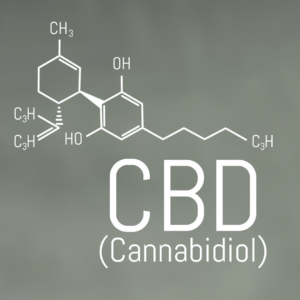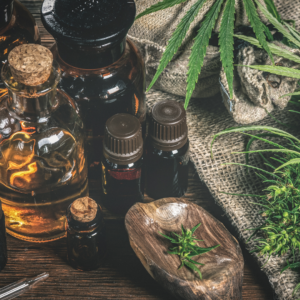Introduction/Brief Market Analysis:
The consumer packaged goods (CPG) market, including cannabis and natural health products (NHPs), is always on the lookout for changes in the regulations that allow for new products, be it new packaging, formulation, or types.
One of such recent developments is Health Canada’s consideration for developing a potential framework for non-prescription health products containing cannabidiol (CBD) as a medicinal ingredient following a 2019 consultation that sought external scientific advice on the short-term self-care use of the compound.

Canadian Cannabis Market:
Since its legalization in 2018, the Canadian cannabis market has experienced consistent annual growth, especially in the recreational sector. Although cannabis products are now available in many different types, the market’s interests are concentrated on high THC (>20%) or high CBD with lower demand for other combinations in between as published by the Ontario Cannabis Store (OCS). The high demand for CBD has made it an attractive partner for NHPs.
CBD has been of interest as a therapeutic compound for many years now. Unlike delta-9-tetrahydrocannabinol (THC), CBD is not intoxicating (has no psychoactive effects) and there is a body of research that provides evidence for its safety and potential therapeutic uses, although as we will see, more research is needed for longer-term treatments.
This piece discusses the public’s interest in CBD, safety considerations, and how the regulatory and market landscapes might look when CBD is used as a medicinal ingredient in NHPs.
Safety and Efficacy of CBD:
As mentioned earlier, the Canadian cannabis market demands are focused on either high THC or high CBD (with no or little THC). While the THC causes intoxication and poses a risk of developing addiction, CBD is not psychoactive or habit-forming and is now being considered a medicinal ingredient to be used in NHPs. In a recent report published by a science advisory committee, the safety and efficacy of CBD for human and animal use were discussed and recommendations made.
Although more scientific data is needed for the safety and efficacy of long-term use of CBD, there is early evidence that shows using CBD for 30 days or less can help with relieving minor symptoms and stress and nervousness, promoting sleep, and relieving minor pain.
It is important to keep in mind that the recommended 20-200 mg/day of CBD is for generally healthy adults and applies to oral administration of CBD. This can be made safer if the consumer consults with their physician, especially if they are taking other medication which CBD could interfere with. Additionally, people with pre-existing medical conditions, women who are lactating, pregnant, or planning to become pregnant, and those with cannabinoid allergies should refrain from using CBD-containing products.
Important Regulatory Considerations:
Important regulatory considerations in this context include precautionary messages about possible CBD-drug interactions and other risk factors on the packaging.
Both CBD and NHPs enjoy sizable global markets. The CBD global market had an estimated value of USD 551 million in 2021 and projections indicate a CAGR of 28.30% until 2028 with a value of over USD 3 billion. Even bigger is the NHP market with a value of USD 152 billion in 2021 with a CAGR of 8.9% from 2022-2030. The new path to integrate CBD and NHP regulations and products can certainly open doors to new opportunities and products that the market can enjoy.
Challenges with mixing CBD & NHPs:
The main challenge of mixing CBD with NHPs that can be used without a practitioner’s oversight is the lack of scientific evidence/clinical data to show the long-term effects of CBD use in generally healthy adults. This is especially pronounced in the absence of studies on the long-term use of CBD in different populations and age groups, including vulnerable groups.
Contributing to this challenge is that CBD is a biphasic compound, meaning that it elucidates different or even opposing effects when used at different concentrations. For example, higher CBD doses are correlated with promoting sleep, while lower doses can delay it.
Non-Prescription Use of CBD:
Concerning the non-prescription use of CBD in non-human subjects, there is not enough evidence to recommend it for horses or food-producing animals since very little is known about the extent to which this could affect human health in the latter case. It seems like the cats also have to wait until more concrete evidence is put together for the safety and efficacy of CBD.
However, there are indications that dogs who suffer pain due to osteoarthritis could benefit from 0.2-2 mg/kg of CBD when taken orally. Similar to the safety measures concerning human intake of CBD, administering the right dose for dogs must also be accompanied by a veterinarian’s input and oversight as necessary.
The sizable markets of CBD and NHPs are certainly a good incentive for the regulatory merger we are discussing here. However, no good strong idea comes to life without some struggles and obstacles.
CBD & NHP Market Strength/Challenges:
The strength of the market comes from different sources. To name some, both cannabis and NHP industries have well-established procedures in place to meet Health Canada and in some cases other standards, e.g., GMP, ISO, etc.
Additionally, the main ingredients of NHPs, including CBD, are readily available and both have shown to be reliable markets in product delivery. Additionally, locally sourced and environmentally friendly packaging and printing shops could benefit from the new line of business. Finally, more post-secondary education intuitions are developing new courses and programs that fit the market’s demands.
The challenges are also multifaceted. Reliable clinical data, especially for long-term use of CBD and/or at-risk populations are yet to be obtained. This goes both for human and animal use. Another challenge is the availability and accessibility of information and educational sources on the topic.
Potential Side Effects of CBD Products:
Without a good understanding of the product and its possible side effects, the public would be reluctant to become returning consumers. And of course, with the rather rapid rise of the costs of goods and services across the globe, the investors will be more careful and stringent with their spending, which could negatively affect the smaller and newer businesses.
Those who decide to venture off into this new territory and face the challenges are welcomed by Health Canada to provide their market considerations, including product types, their intended use, formats, dosage, and any other considerations regarding the potential markets for such products.
Regulatory Considerations:
Regulations and the industry work hand in hand to maintain and improve the state of affairs through mutual feedback. For developing new regulatory frameworks for the topic of CBD as NHP, Health Canada is accepting input from interested parties on the regulatory aspects of packaging and labeling, point of sale, access, and post-market surveillance among others.

For CBD to be used as a medicinal ingredient in NHPs, it must have a monograph available, which will subsequently require certain packaging and especially labeling requirements. As more side effects and/or adverse events are reported and documented in clinical environments, the closer we become to having a copy available. The monograph can also prevent application bottlenecks at Health Canada, which affects both CBD and non-CBD NHP applications as the regulatory authorities deal with the post-epidemic backlogs.
GMP Standards and Good Production Practices (GPP):
Cannabis Act products must meet good production practices (GPP) standards, although many license holders are now also GMP-certified. For CBD-containing NHPs, GMP standards are an automatic must to ensure quality products that are suitable for human consumption. In this regard, safety, efficacy, quality, and post-market surveillance are of utmost importance and successful businesses must have approved and effective procedures for recall and for responding to the reports of adverse events.
It is worth mentioning that the CBD we are discussing here must meet the following criteria:
- CBD is ≥98% of the total cannabinoid content of the preparation,
- Any cannabinoids other than CBD must be only those naturally found in cannabis and together equal no more than 2% of the total cannabinoid content of the preparation,
- THC content must not be more than 1% of the total cannabinoid content.
The regulations dictate the product lifecycle design and budgeting. This is why regulated businesses invest in hiring compatible and competent regulatory affairs specialists and/or consulting companies like CLE who can help you navigate the multifaceted regulations and requirements to satisfy your compliance needs.
Conclusion
It is great news for the industry to see CBD on its way to being considered an NHP. The path won’t be easy but seems worth the trouble. Both CBD and NHP enjoy growing markets that have the potential to benefit from this merger. As more data from clinical and lab-based analyses become available, we also get closer to having a monograph to make licensing as well as importation and exportation processes easier.
Other questions to contemplate are how the rescheduling of CBD from cannabis to NHP will impact the cannabis market and whether CBD products will still require a cannabis processing license. Considering CBD-only and CBD-dominant are one of the high demands in the current cannabis market, there might be resistance in the path of complete separation of CBD from the Cannabis Act. In the case of separation, facilities can likely operate under a site license as opposed to the more supervised cannabis facility license.
Importing NHPs with CBD Ingredients:
The import of NHPs with CBD will most likely follow the current framework, although generally speaking, Canada resists the importation of cannabis products to safeguard the domestic market.
Filling more of the clinical and laboratory data gap in addition to proper educational resources for the willing and potential consumers will provide a suitable environment for the new regulatory framework to be established.


